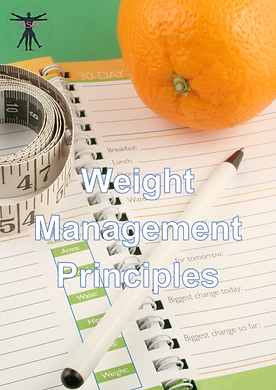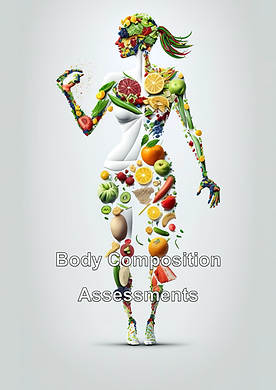
Level 4 Obesity & Diabetes
Assessment Guidance & Documentation

The key email address is Case Studies for anything associated with externally delivered courses. Please note: For extension requests or queries regarding assessments please contact Case Studies.
Additionally, lecturing staff is not permitted to preliminary grade papers prior to submission. All communication should be made directly to the WRIGHT Foundation Office and any requests to review students' work will be declined.
Submission Dates
Case-study report: post-course written assessment.
To be completed post-course and is based on a ‘hypothetical’ client. Candidates have 12 weeks to complete this assessment and return it to the office. Pass Mark = 70%. per section.
Task One - Complete the Online Course
-
2 x Multiple Choice [Day 2 & Day 3]
-
1 x Calculation [See Links Below]
On Course Resources
Schofield, W.N., 1985. Predicting basal metabolic rate, new standards and review of previous work. Human nutrition. Clinical nutrition, 39, pp.5-41.
Cunningham, J.J., 1980. A reanalysis of the factors influencing basal metabolic rate in normal adults. The American journal of clinical nutrition, 33(11), pp.2372-2374.
McArdle, W.D., Katch, F.I. and Katch, V.L., 2010. Essentials of exercise physiology. Lippincott Williams & Wilkins.
Basal Metabolic Rate Worked Examples
PDF Version > Link
This short presentations examples energy expenditure
Downloadable Online Clinical Exercise Physiology Resources
Click image to access textbooks.
Energy Requirements, Equations & Original Studies
Harris, J.A. and Benedict, F.G., 1919. A biometric study of basal metabolism in man (No. 279). Carnegie Institution of Washington.
Roza, A.M. and Shizgal, H.M., 1984. The Harris-Benedict equation reevaluated: resting energy requirements and the body cell mass. The American journal of clinical nutrition, 40(1), pp.168-182.
Mifflin MD, St Jeor ST, Hill LA, et al. A new predictive equation for resting energy expenditure in healthy individuals. Am J Clin Nutr 1990; 51: 241-7.
On Course Notes
Day 1 - House of Commons (2022) Obesity Statistics > Link
-
The Scottish Health Survey The Glasgow Effect > Link
-
Health Survey for England 2019 Overweight and obesity in adults and children > Link
-
Northern Ireland: adult obesity > Link
-
Notes On Obesity & Diabetes > Link
-
Section 3 Discussion Notes > Link
-
Office for Health Improvement & Disparities: Obesity Profile- update of adult slide packs February 2023 > Link
Day 2 - Notes On Obesity & Diabetes > Link
-
Presentation Notes > Link
Obesity & Diabetes Online Presentations
[From Strength.Physiology.Online]
Task 2 - Complete The Case Study
Case Study Assessment Resources
Case Study Summary Guidance
You must complete the following:
Section 1 - Provide a summary of your client’s medical history and current medical status.
Section 2 - Details of any medication your client may be taking, including the reason for taking the medication, the effect, the potential side effects, and the implications for exercise prescription. [ Example Table Template > Link ; NHS Medication > Link ]
Section 3 - Provide statements of the appropriate clinical objectives. Each objective must be accompanied by the underlying reason, or multiple reasons, for selection. [Section 3 Discussion Notes > Link ]
Section 4 - A six-week plan of Physical Activity (PA), gym-based or utilizing appropriate PA programming, to introduce an increase of approx 200 kcals per day energy expenditure averaged over the six-week period. [See Case Study Template For Examples]
Section 5 - Consider all psychological issues you feel are relevant in dealing with your client, in order to effect positive lifestyle change(s) and provide details of which behavioral strategies you feel would be appropriate.
Section 6 - A summary of pre-post physiological measurements with a rationale for each measurement and, where appropriate, a rationale for not taking a specific measurement (i.e. fat mass); you must include classifications. [Example Table Template > Link]
Section 7 - An assessment of your client’s BMR and average daily kcal expenditure from the information given or obtained. [BMR Book > Link ; See Case Study Template For Guidance]
Section 8 - An assessment of your client’s average daily caloric intake from the information given or obtained. [See Case Study Template For Guidance]
Section 9 - An assessment of the effect(s) items 7 and 8 will have on the mass of your client over an annual cycle, assuming all other factors remain constant. [See Case Study Template For Guidance]
Section 10 - An information sheet suitable for your lay client listing a range of healthy food choices from each of the macronutrient groups.
Section 11 - An information sheet suitable for your lay client (one side A4) listing the benefits of habitual, volitional PA.
Section 12 - A six-week plan of dietary modification that will elicit a reduction of 300-400 kcals.day-1 (be clear to acknowledge you are not a dietician or nutritionist). [See Case Study Template For Guidance]
Section 13 - A plan of how you would engage the help of, or offer your services to, the local NHS/PCT dieticians to form a multidisciplinary team in obesity management.
Section 14 -Identify an exit strategy for your client that would encourage/elicit long term weight management and volitional physical activity
Additional Resources
ACSM (2021) Exercise Guidelines
ACSM (2021) Exercise Recommendation for the Overweight & Obese Client.
ACSM (2021) Exercise Recommendation for the Diabetic Client.
ACSM (2021) Strategies & Approaches for Increasing Physical Activity.
NHS Medication Resource [Case Study Relevant]
-
NHS Medication > Link
-
NHS Obesity Medication (Orlistat and Saxenda) > Link
-
Update: NICE (Published 8/3/2023) Semaglutide for Managing Overweight & Obesity > Link
*Physical & **Mental Health Resources/Measurement & Tools [Case Study Relevant]
-
**GAD-7 [Anxiety] - Link
-
**PHQ-9 [Depression] - Link
-
**Warwick-Edinburgh Mental Well-being Scale (WEMWBS) - Link
-
**Short General Health Questionnaire (GHQ 12) - Link
-
*PARQ+ (2021) - Link
-
*Various Online Calculators - Link
-
*1RM Estimate Calculator - Link
-
*RPE Chart - Link
-
*Talk Test Chart - Link
-
*Example of a RAG Progression Circuit [Red, Amber & Green] - Link
* = Physical Resources
** = Mental Wellness Resources
Information Based on Current Weight Management Principles
Understanding Body Composition Assessments
Please Note: All evidence or questions should be sent to the following address and NOT the Lecturers.
Additionally, it is expected that all completed assessments will be graded by the assessors [normally between a period of 4-6 weeks] upon receipt from the WF office.




















